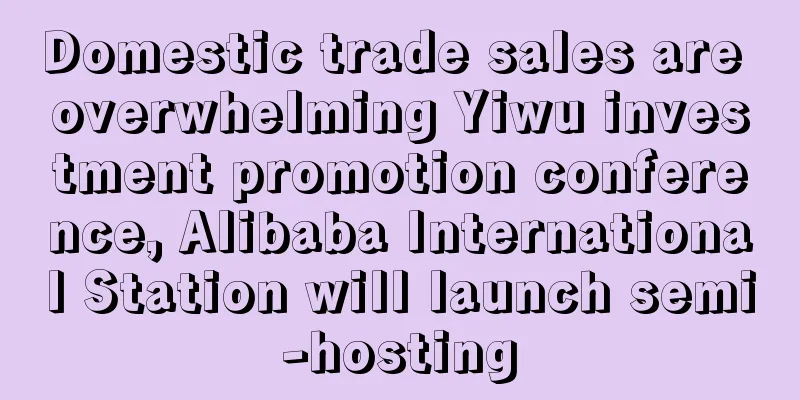The latest news: Amazon’s peak season delivery fees for 2024 are here!

|
Today, Amazon notified sellers that it will implement holiday peak season delivery fees from October 15, 2024 to January 14, 2025, and the new rates have been announced.
Amazon announces 2024 peak season delivery rates
A few days ago, an Amazon seller discussed that in the past few years, there was a column in the FBA delivery fee chart showing the increase in holiday/peak fees, but the updated FBA fees in 2024 are not like this. There is only a column " starting from April 15, 2024 ". Does this mean that there will be no peak delivery fees between October 15, 2024 and January 14, 2025 ? I'm afraid it's difficult.
Early this morning, Amazon sellers received a notification about peak season delivery fees. The platform first praised the sellers, saying that thanks to their cooperation, they created the biggest Black Friday, Cyber Monday and the entire holiday shopping season in history. Then, the 2024 peak season is coming again, and Amazon will implement the annual holiday peak season delivery fee from October 15, 2024 to January 14, 2025. On January 15, 2025, Amazon's logistics delivery fees will return to non-peak season rates.
Note that the 2024 holiday season delivery fee will apply to all products. All products in the same specific size tier within the same marketplace will also be charged the same fee. This fee will apply to US FBA, Canada FBA, North America Remote Fulfillment, US Multi-Channel Fulfillment, and Buy with Prime.
Overall, this year's average holiday peak season delivery fees will be the same as last year, but products sold for less than $10 using Amazon Logistics in the United States will be charged according to the new peak season fees in 2024. Despite this, Amazon said that the average FBA delivery fee is still 70% lower than similar next-day delivery services provided by other third-party logistics .
Amazon has published detailed rates based on size and weight . For US Amazon logistics rates, the following rates apply to products other than clothing:
Compared with the non-peak season, the cost of small standard parts increased by US$0.19 to US$0.22 during the peak season, and the cost of large standard parts increased by US$0.24 to US$0.41. The price increase for large parts started at US$1, and the increase for oversized parts was even higher.
The rates below apply to clothing products. Compared with the non-peak season, the cost of small standard items during the peak season will increase by 0.23 to 0.29 US dollars, the price of large standard items will increase by 0.31 to 0.46 US dollars, and the price of large large items will also increase by 1 US dollar, and the price of oversized items will increase more.
For example, for the Small Standard size, a mobile device case that measures 13.8 x 9 x 0.7 inches and weighs 2.88 ounces, with a shipping weight range of 2 to 4 ounces (excluding 2 ounces), the non-peak season fee is $3.15 and the peak season fee is $3.34.
For large standard-size clothing, a T-shirt measures 13 x 9 x 0.85 inches, has a volumetric weight of 11.45 ounces, a product weight of 5.40 ounces, and a shipping weight range of 8 to 12 ounces (excluding 8 ounces). The larger of the product weight or volumetric weight is taken here. The cost of this product is $4.67 in the off-season and $5 in the peak season.
In addition to regular goods, the delivery costs of dangerous goods have also increased, and the increase is even greater. For example, the cost of small standard-size goods will increase by US $0.34 to US$0.55.
In addition, low-priced products that enjoy platform support cannot be avoided. Previously, products priced below $10 automatically enjoyed the low-priced Amazon logistics fee, with the same delivery speed, but the fee was $0.77 lower than the standard FBA. However, from October 15, 2024 to January 14, 2025, products that enjoy the low-priced Amazon logistics fee will also be charged the peak season delivery fee.
How are orders placed at the critical point between off-season and peak season charged? Amazon explained that the delivery fee is calculated and charged when the shipment leaves the fulfillment center. If the product is ordered before October 15, 2024, but delivered on or after that date, the new delivery fee starting on October 15 will also apply.
Overall, Amazon believes that the seasonal fees it charges are roughly comparable to those charged by other major carriers, and that these fees paid by sellers during peak seasons will help Amazon cover the increased delivery and transportation costs during the holiday season.
Amazon's multiple fee changes
Since entering 2024, Amazon has made drastic changes to logistics and warehousing costs, most of which are new charges and increases in existing charges. Especially in the past month, the notifications on fee adjustments are dazzling. Sellers need to understand the relevant changes and adjust their business strategies in a targeted manner. This week, Amazon announced that in order to help European sellers test new products across sites at a lower cost and to connect Amazon logistics between the UK and the EU efficiently and at a low cost, Amazon’s Remote Delivery ( EURF) between the UK and the EU has undergone a major upgrade: first, it will cover more sites, with the Netherlands and Sweden added in addition to the UK, Germany, France, Italy and Spain; at the same time, remote delivery fees from the EU to the UK will be reduced by 26%-59%, helping sellers to test new products across sites in Europe at a lower cost .
By using remote delivery , sellers can store their products in Amazon's fulfilment centres in the UK or EU to deliver orders to the EU or UK without having to pay VAT or have inventory in the destination country.
The inbound configuration fee is a major cost faced by sellers this year. The difficulty for many sellers in shipping is that even if they create shipments multiple times, they may not get the free shipping option.
Amazon's official answer to this question is: To obtain optimized warehousing options without paying warehousing fees, the seller's shipment must meet two conditions : first, each product (SKU) must contain at least 5 identical cartons or pallets; second, each carton or pallet must contain the same combination of products, and the quantity of each product in each carton or pallet must also be the same.
However, after the Amazon Prime Day promotion, many sellers reported that the warehousing configuration fee has quietly increased, causing the delivery cost to rise again . Combined with the recent delivery situation, some sellers have begun to consider or use Amazon Global Logistics ( AGL) or Amazon Warehouse Distribution Network (AWD).
Sellers can use Amazon Priority Purchasing ( AMP) to consolidate shipments of the same type of goods into one warehouse, or they can use AWD to warehouse goods. The advantage of the latter is that it can achieve warehouse consolidation and avoid warehousing defects, and there is no additional warehouse configuration fee, low-volume inventory fee, and peak-season inventory fee.
Although the official is promoting its own logistics service, in the complex situation where delivery involves multiple charges and warehouse division results, sellers can compare it with other delivery channels and see whether it is a backup option. |
<<: Halloween products have started to be sold! Amazon keyword rankings soared 400 places in 7 days
>>: Explosive! Cross-border sales reached nearly 7 billion in half a year
Recommend
Top 5 sales tips for Wayfair sellers in 2021, get them quickly!
According to Statista data, by 2023, 15% of marke...
Amazon lost millions of dollars on huge sales! Reselling at low prices is a rip-off
While Amazon provides development opportunities f...
What is Request a Review? Request a Review Review, Features
Request a Review is a new feature launched by Amaz...
Freight rates are rising again, and logistics congestion is getting worse...
Air freight prices are going up again! In additio...
What is Seller Growth Academy? Seller Growth Academy Review, Features
Seller Growth Academy is an educational platform ...
Amazon Europe announced the launch of the "Transparency" anti-counterfeiting seal; more than 20 Chinese sellers were sued for infringing the Champion trademark
Amazon Europe announces the launch of the "T...
What is YetiPay? YetiPay Review, Features
YetiPay is a Polish e-wallet that allows customer...
What is Twitch? Twitch Review, Features
Twitch is a real-time mainstream streaming video ...
Benchmarking against Amazon, the second largest e-commerce platform in the Middle East has explosive potential!
For many years, the main markets that cross-borde...
Shopee 9.9 Super Shopping Festival drives more than 7 times growth in cross-border multi-category sales
September 13, 2022, China - Recently, the leading...
496,100 handrail risers were urgently recalled, causing 2 deaths!
Recently, the U.S. Consumer Product Safety Commis...
What is Trademe & Trademe Review
Trademe is New Zealand's largest online marke...
Sellers entered the 200 billion market and it exploded!
In recent years, the prevalence of the stay-at-ho...
Does Etsy secretly encourage buyers to open cases?
It is understood that Etsy is encouraging buyers ...
A small team earns 1 million yuan a year! Sellers: Don’t start a business if you’re new to it
"Don't start a business, Xiaobai, it'...









